Kung Pao Chicken
This post may contain affiliate links. Read my full disclosure policy.
Kung Pao Chicken, a Chinese takeout favorite with tender chicken, crunchy peanuts, and vibrant veggies in a bold, savory sauce, comes together in just 30 minutes for an easy weeknight meal!
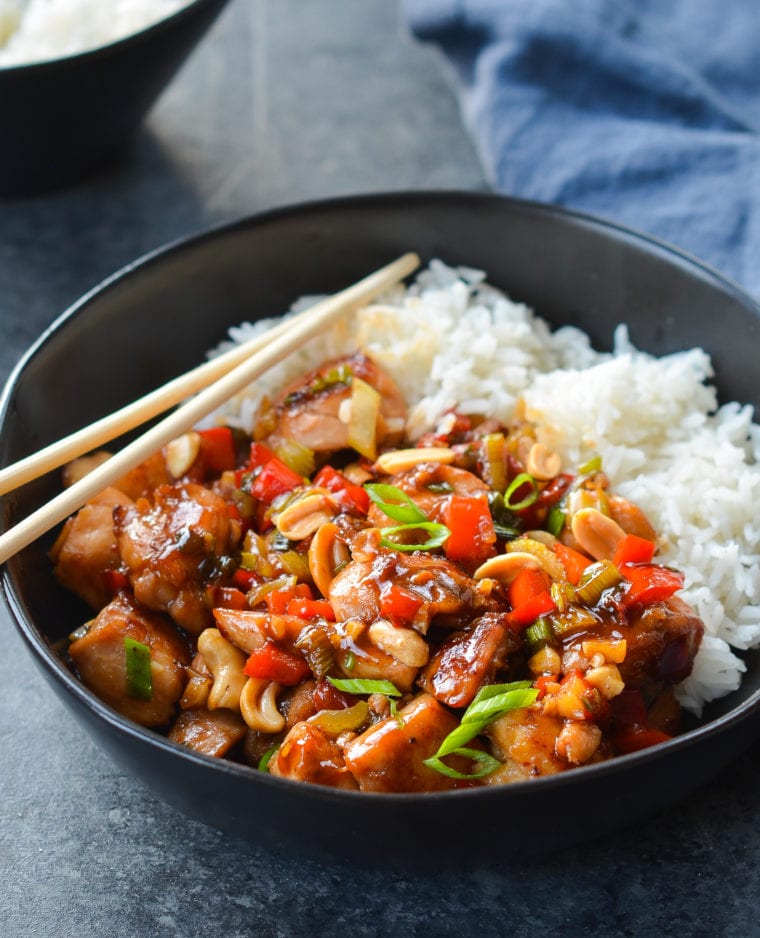
Kung pao chicken is a popular Chinese restaurant dish that combines tender chicken, crisp veggies, and peanuts with a spicy, tangy sauce. While it’s traditionally made with specialty ingredients like Sichuan peppercorns, Chinese black vinegar, rice wine, and dried red chilies, this simplified version swaps those hard-to-find items for staples from your local supermarket. It still delivers the same bold flavor and makes for a delicious weeknight dinner, especially with a side of rice.
“We made this for the first time this week, and it was a massive hit. Our family has a rating scale for recipes, and this got the top marks from everyone!”
What You’ll Need To Make Kung Pao Chicken
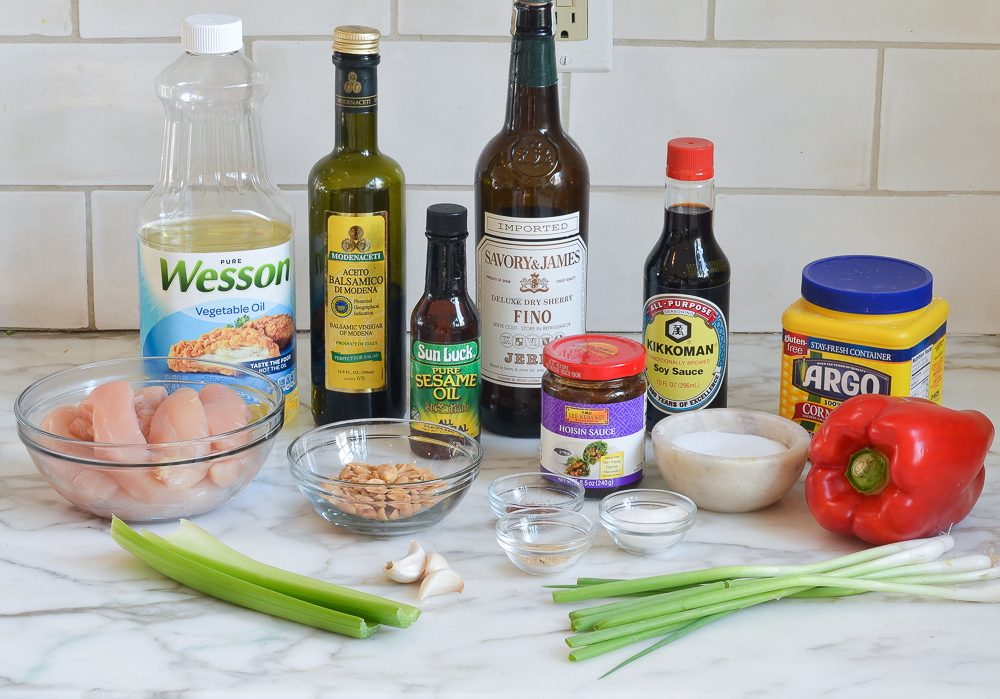
- Soy sauce – Adds savory umami flavor to both the marinade and sauce, a classic base for Asian cooking.
- Dry sherry – Adds a subtle depth and complexity to the marinade. While Chinese cooking wine is traditional, dry sherry is a great substitute that’s more readily available and offers a similar rich, slightly sweet flavor.
- Cornstarch – Creates a protective coating that locks in the chicken’s moisture during cooking, preventing it from drying out and ensuring it stays juicy and tender. Additionally, it helps thicken the sauce, giving the dish a smooth, glossy finish.
- Chicken – Chicken tenderloins are ideal—they are easy to work with and naturally very tender—but boneless skinless chicken breasts can be used as well (just keep in mind they won’t be quite as tender).
- Balsamic vinegar – Used as a substitute for Chinese black vinegar, it provides a similar tangy sweetness and depth to the sauce.
- Hoisin sauce – Brings a touch of sweetness and savory depth to the sauce.
- Asian toasted sesame oil – Adds a nutty, toasty flavor to the sauce.
- Crushed red pepper flakes – Adds a kick of heat; adjust to your taste for a milder or spicier dish.
- Ground ginger – Adds a warm spice and aromatic note to the sauce.
- Vegetable oil – Neutral cooking oil that allows the other flavors to shine while giving a nice sear to the chicken and veggies.
- Red bell pepper and Celery – These veggies add color, sweetness, and crunch to the stir-fry.
- Garlic and scallions – Together, they provide a fragrant, aromatic base for the stir-fry, with the garlic adding bold flavor and the green onions bringing a fresh, mild onion note.
- Peanuts or cashews – Adds crunch and a nutty richness that complements the savory sauce and tender chicken.
- Jump to the printable recipe for precise measurements
Step-by-Step Instructions
As with any stir-fry, you want to do all of your prep ahead of time because the cooking goes very quickly. Since the chicken needs to marinate for 15 minutes, get that started first. In a medium bowl, whisk together the soy sauce, dry sherry, and cornstarch until the cornstarch is dissolved. Add the chicken and toss to coat. Let stand at room temperature for 15 minutes, stirring occasionally.
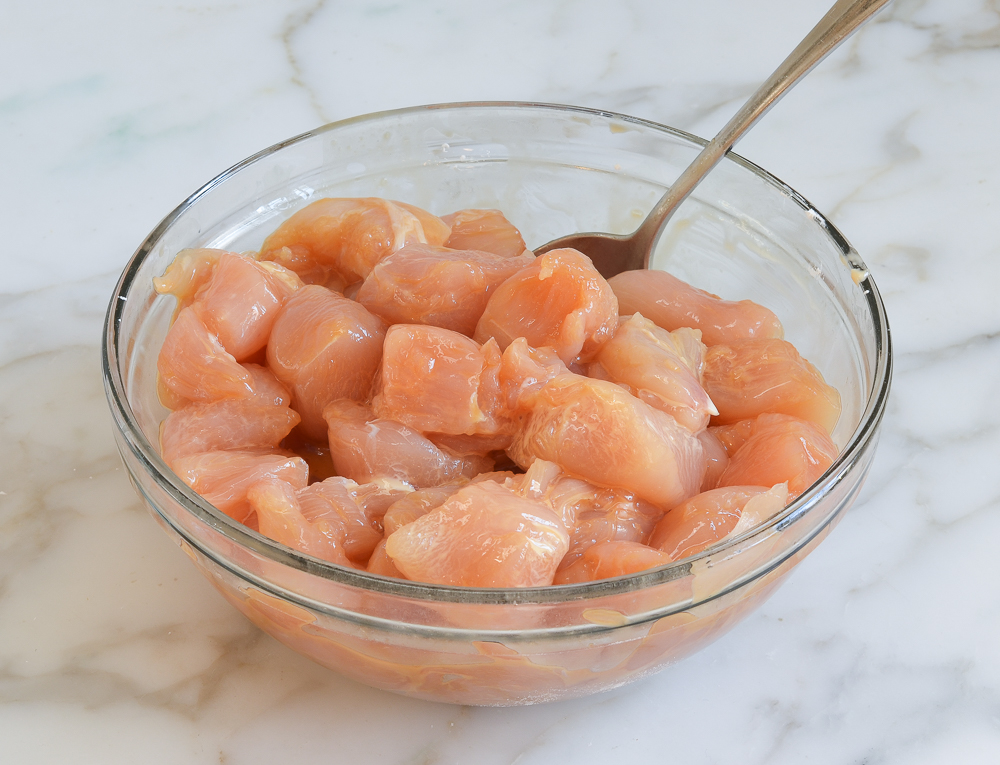
Meanwhile, chop the bell pepper, celery, scallions, and garlic.
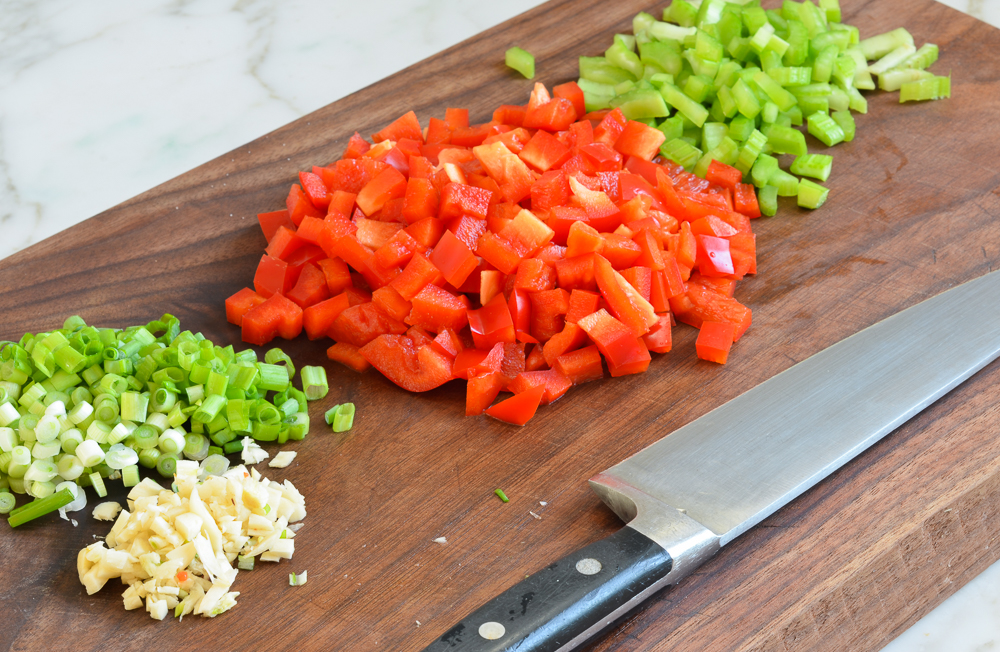
In another medium bowl, prepare the sauce by whisking together all of the sauce ingredients: balsamic vinegar, soy sauce, hoisin sauce, sesame oil, sugar, cornstarch, red pepper flakes, ground ginger, and water.
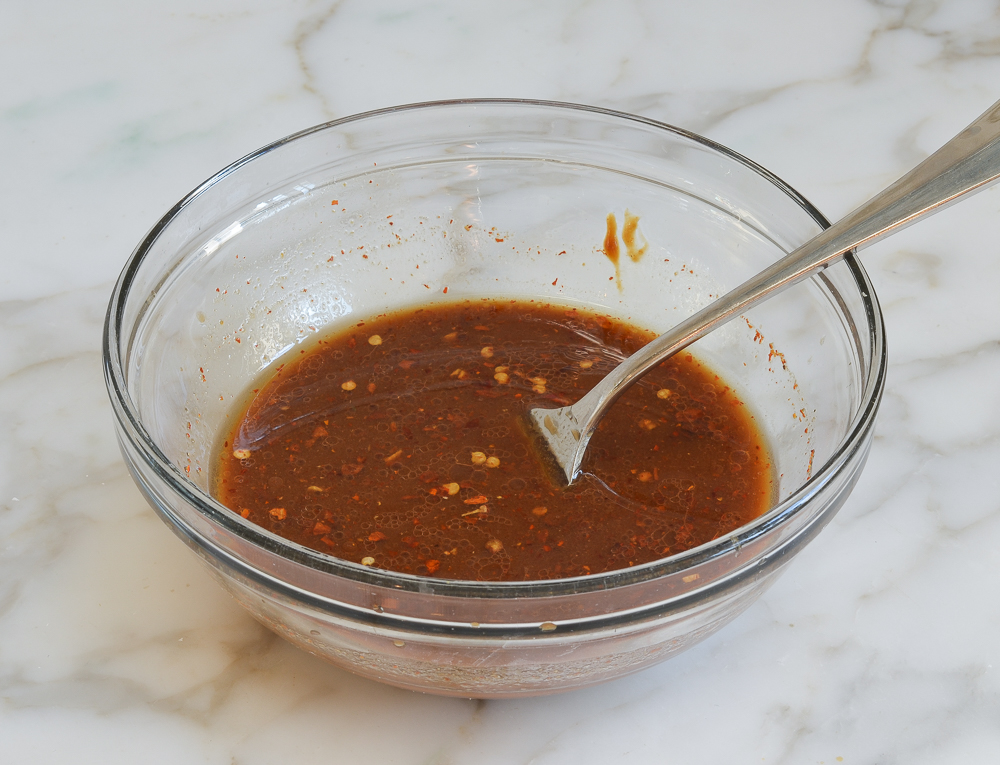
Heat a large skillet or wok over high heat. Add 1 tablespoon of the oil and swirl to coat. Add the bell pepper, celery, and salt.
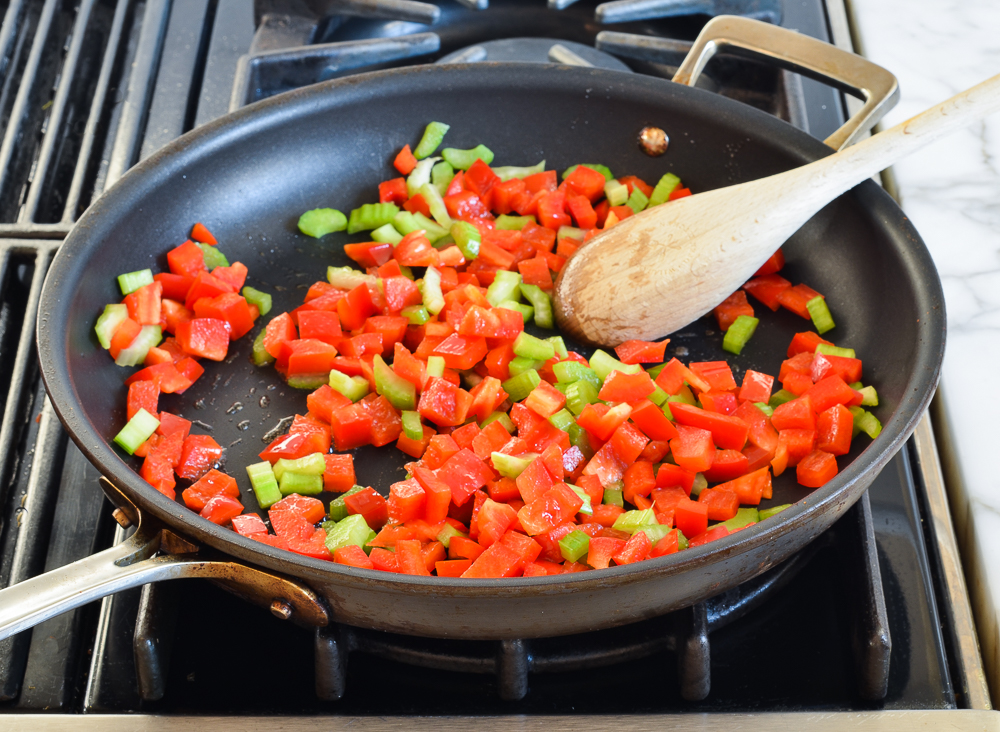
Cook, stirring frequently, until slightly softened and starting to brown, about 5 minutes. Transfer the vegetables to a large bowl and set aside.
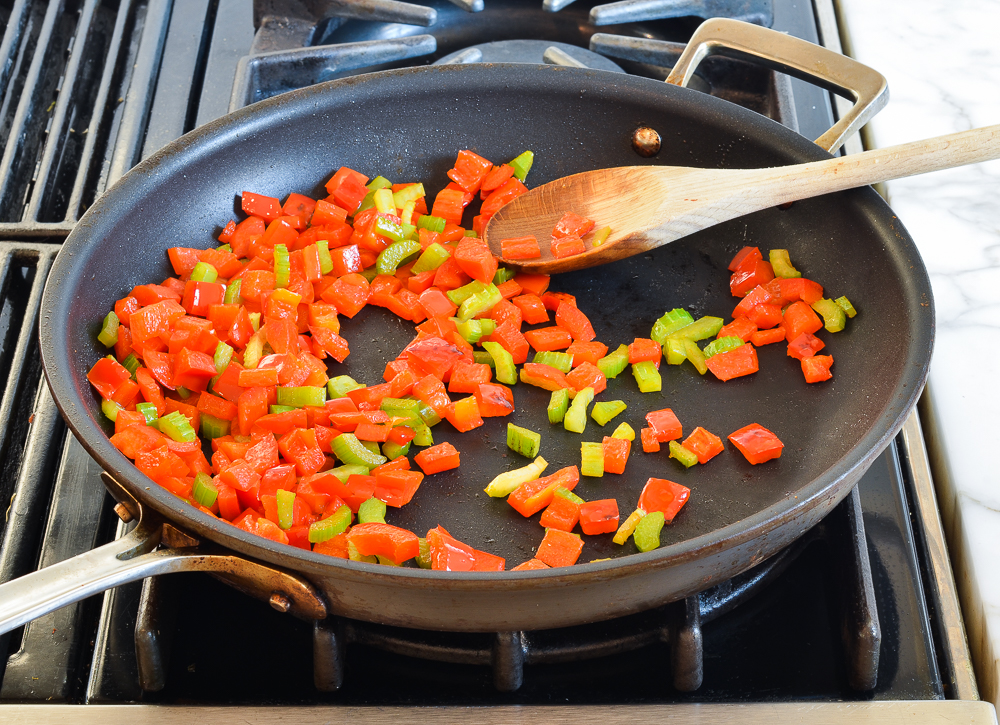
Add an additional half tablespoon of oil to the pan and set over high heat. Add half of the chicken (it’s important not to crowd the pan) and brown on one side.
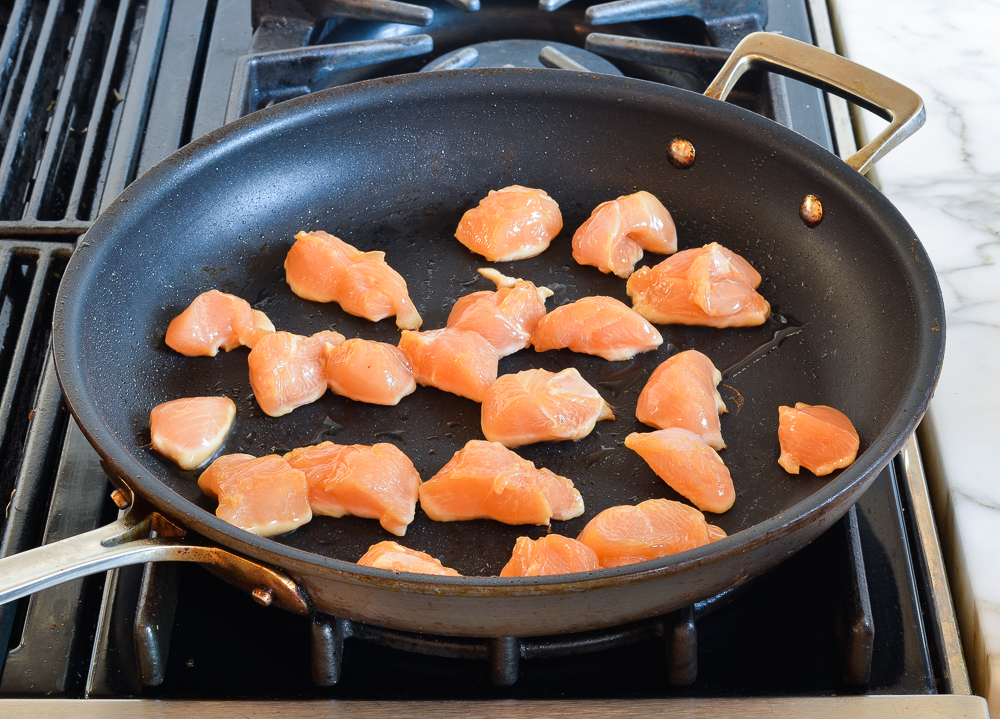
Turn the chicken pieces and continue cooking for 1 to 2 minutes more, or until the chicken is just cooked through. Transfer the chicken to the bowl with the peppers and celery. Add another half tablespoon of oil to the pan. Add the remaining chicken and cook until golden on one side.
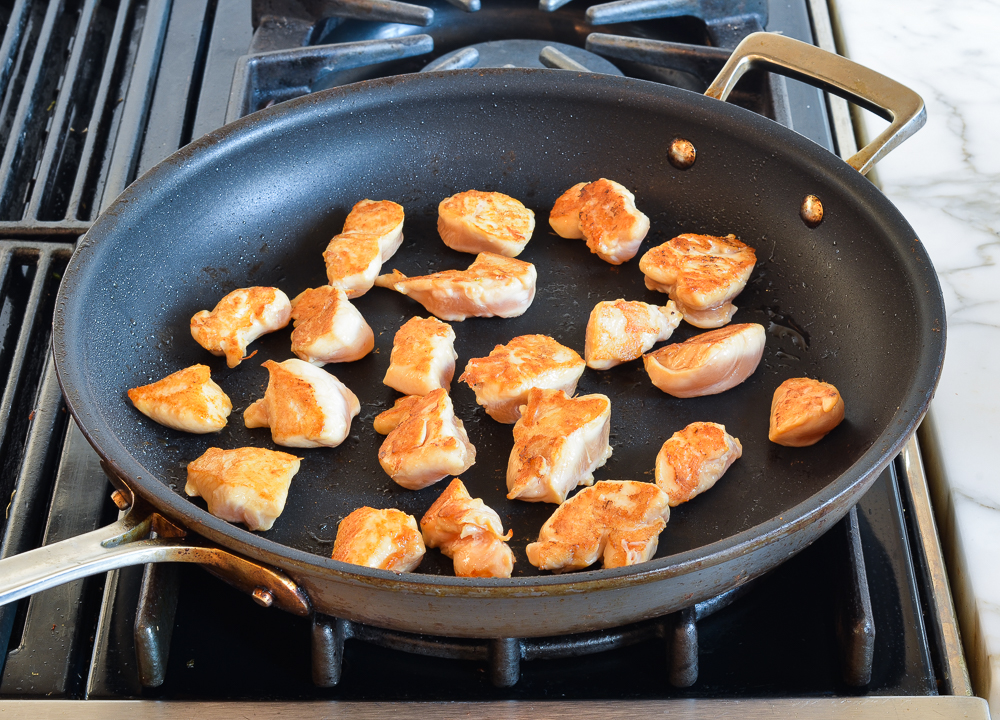
Turn the chicken pieces over and cook for 1 minute. Add 1/2 tablespoon more oil to the pan, along with the garlic and scallions.
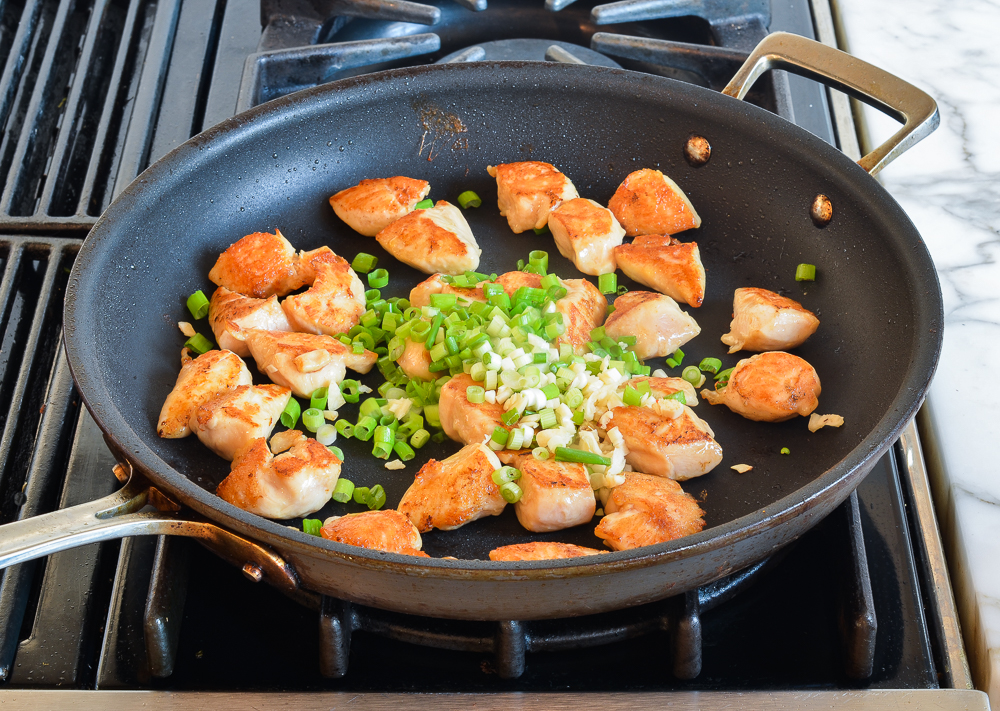
Cook, stirring with the chicken, for about 30 seconds more.
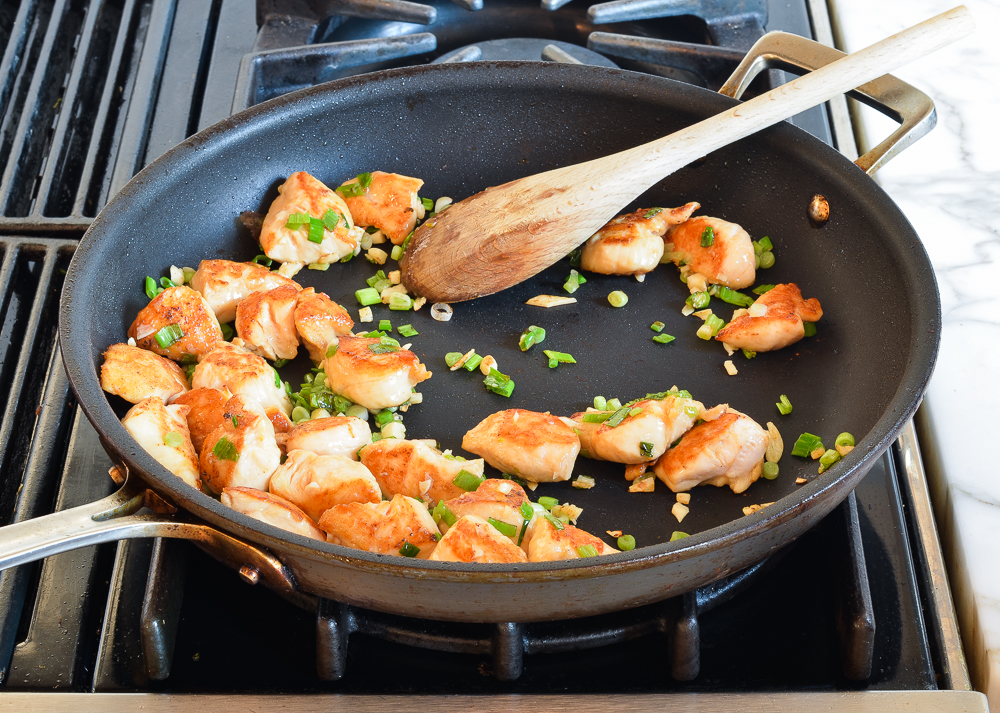
Add the reserved vegetables and reserved chicken to the pan, along with the sauce.
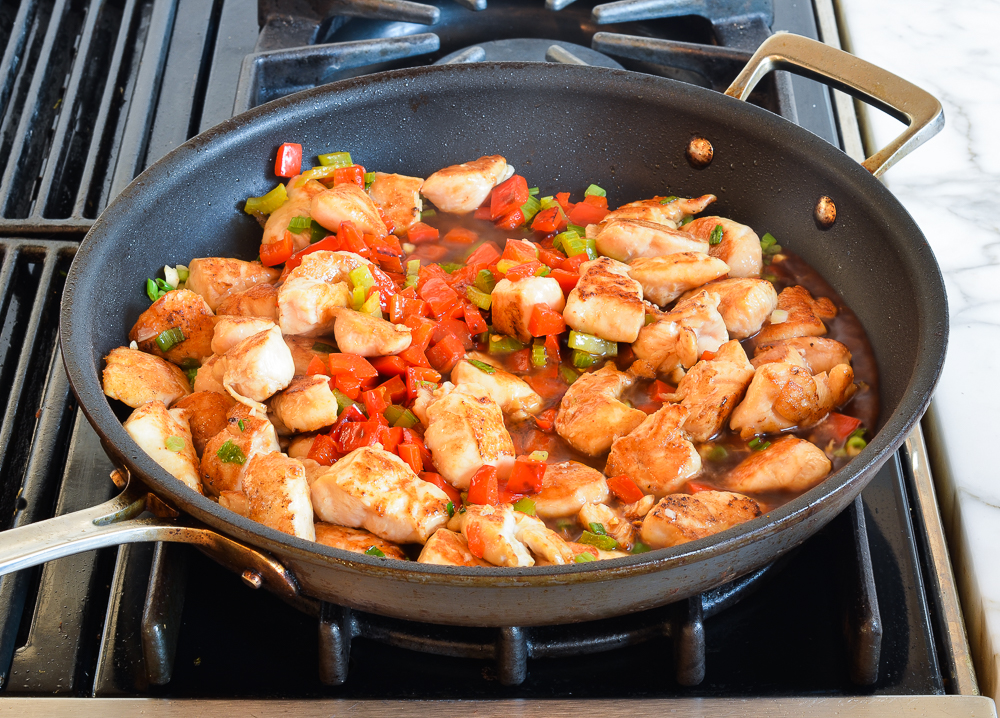
Reduce the heat to low. Cook until the chicken and vegetables are warmed through and the sauce is thickened, about 30 seconds.
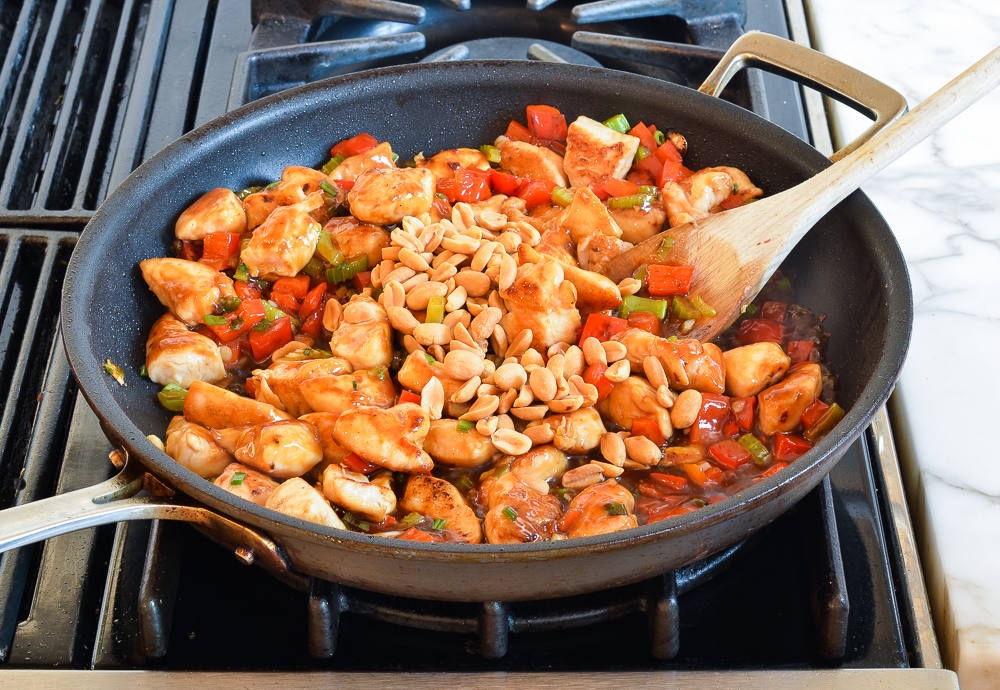
Stir in the nuts. Taste and adjust seasoning, if necessary, and serve with rice.
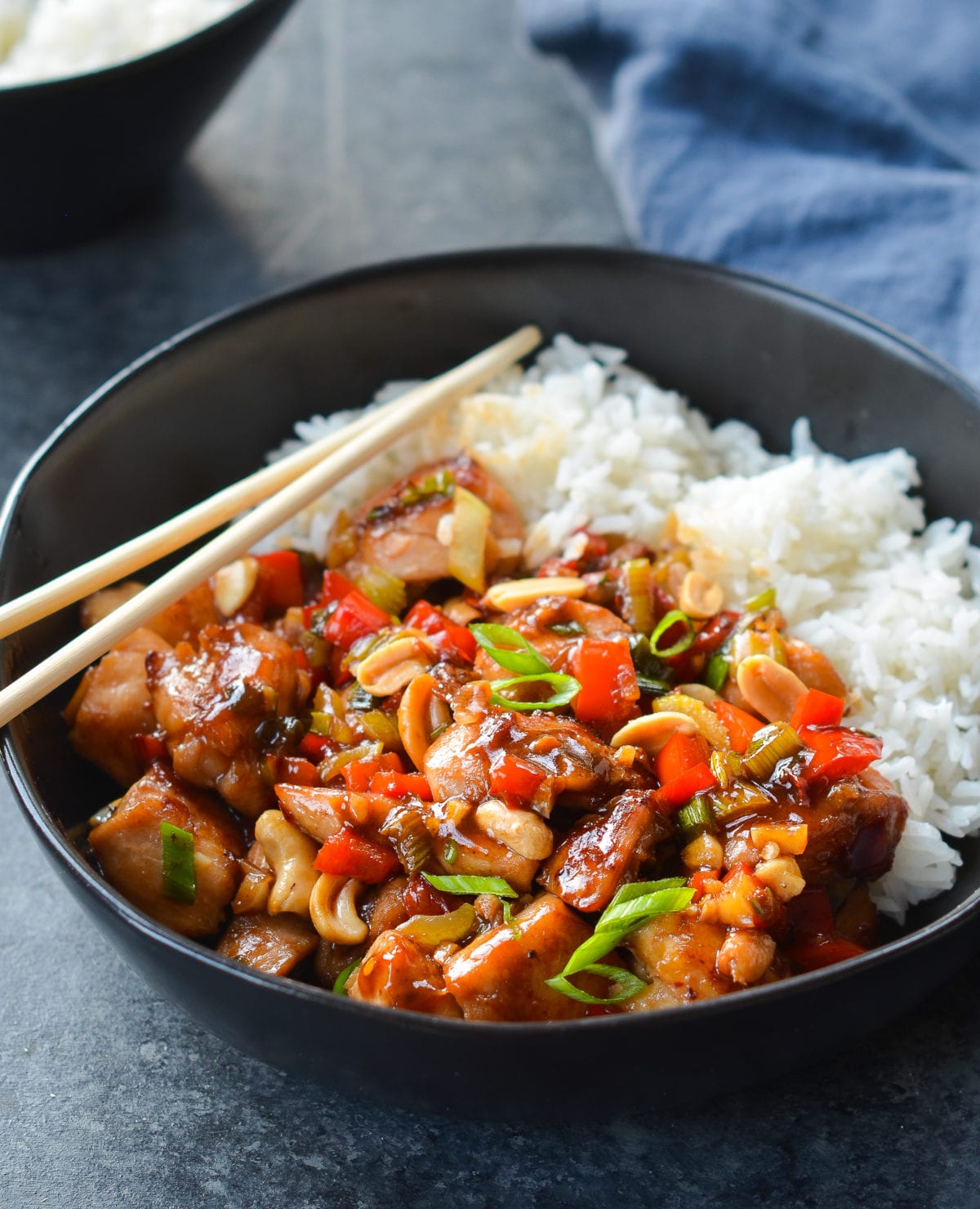
You May Also Like
Kung Pao Chicken
Kung Pao Chicken, a Chinese takeout favorite with tender chicken, crunchy peanuts, and vibrant veggies in a bold, savory sauce, comes together in just 30 minutes for an easy weeknight meal!
Ingredients
For the Marinade
- 1½ tablespoons soy sauce
- 1 tablespoon dry sherry
- 2 teaspoons corn starch
- 1½ lbs chicken tenderloins (or boneless skinless chicken breasts), cut into 1-in pieces
For the Sauce
- 1 tablespoon balsamic vinegar
- 2 tablespoons soy sauce
- 1 tablespoon hoisin sauce, best quality such as Kikkoman or Lee Kum Kee
- 1 tablespoon Asian/toasted sesame oil
- 1½ tablespoons sugar
- 1 tablespoon corn starch
- ½ teaspoon crushed red pepper flakes (use half the amount for a milder sauce)
- ¼ teaspoon ground ginger
- ⅓ cup water
For the Stir-fry
- 2½ tablespoons vegetable oil
- 1 large red bell pepper, diced
- 2 stalks celery, halved lengthwise and thinly sliced
- ¼ teaspoon salt
- 3 cloves garlic, chopped
- 5 scallions, white and green parts, thinly sliced
- ⅓ cup whole roasted unsalted peanuts or cashews
Instructions
- Marinate the chicken: In a medium bowl, whisk together the soy sauce, dry sherry, and cornstarch until the cornstarch is dissolved. Add the chicken and toss to coat. Let stand at room temperature for 15 minutes, stirring occasionally.
- Prepare the sauce: In another medium bowl, whisk together all of the sauce ingredients until the cornstarch is dissolved (it can stick to the bottom of the bowl so be sure to scrape it up).
- Heat a large nonstick skillet over high heat until very hot. Add 1 tablespoon of the oil and swirl to coat. Add the bell pepper, celery, and salt and cook, stirring frequently, until slightly softened and starting to brown, about 5 minutes. Transfer the vegetables to a large bowl and set aside.
- Add an additional ½ tablespoon of oil to the pan and set over high heat. Add half of the chicken (it's important not to crowd the pan) and brown on one side, about 1½ minutes. Turn the chicken pieces and continue cooking for about 1½ minutes more, or until the chicken is just cooked through. Transfer the chicken to the bowl with the peppers and celery. Add another ½ tablespoon of oil to the pan. Add the remaining chicken and cook until golden on one side, about 1½ minutes. Turn the chicken pieces over and cook for 1 minute. Add ½ tablespoon more oil to the pan, along with the garlic and scallions, and cook, stirring with the chicken, for about 30 seconds more.
- Add the reserved vegetables and reserved chicken to the pan, along with the sauce. Reduce the heat to low and cook until the chicken and vegetables are warmed through and the sauce is thickened, about 30 seconds. Stir in the nuts. Taste and adjust seasoning, if necessary, and serve. (Note: the sauce will thicken as it sits; thin it with a few tablespoons of water, if necessary.)
Nutrition Information
Powered by ![]()
- Per serving (4 servings)
- Calories: 692
- Fat: 45 g
- Saturated fat: 7 g
- Carbohydrates: 42 g
- Sugar: 10 g
- Fiber: 5 g
- Protein: 31 g
- Sodium: 1639 mg
- Cholesterol: 70 mg
This website is written and produced for informational purposes only. I am not a certified nutritionist and the nutritional data on this site has not been evaluated or approved by a nutritionist or the Food and Drug Administration. Nutritional information is offered as a courtesy and should not be construed as a guarantee. The data is calculated through an online nutritional calculator, Edamam.com. Although I do my best to provide accurate nutritional information, these figures should be considered estimates only. Varying factors such as product types or brands purchased, natural fluctuations in fresh produce, and the way ingredients are processed change the effective nutritional information in any given recipe. Furthermore, different online calculators provide different results depending on their own nutrition fact sources and algorithms. To obtain the most accurate nutritional information in a given recipe, you should calculate the nutritional information with the actual ingredients used in your recipe, using your preferred nutrition calculator.
Gluten-Free Adaptable Note
To the best of my knowledge, all of the ingredients used in this recipe are gluten-free or widely available in gluten-free versions. There is hidden gluten in many foods; if you're following a gluten-free diet or cooking for someone with gluten allergies, always read the labels of your ingredients to verify that they are gluten-free.

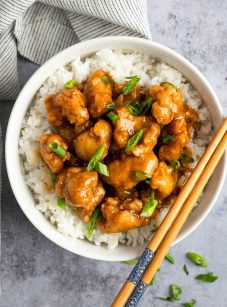
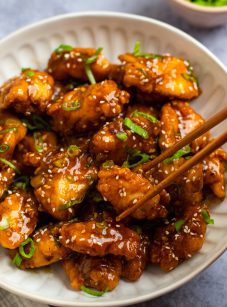
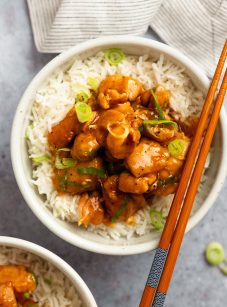
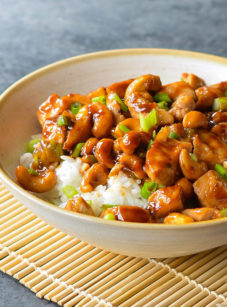
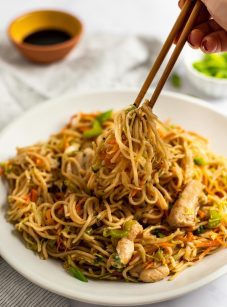
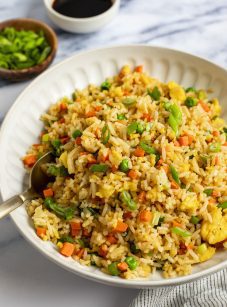
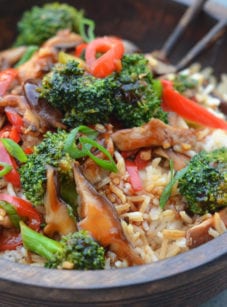
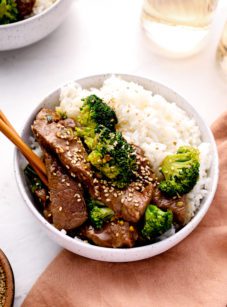
I was skeptical when I saw balsamic vinegar on the list of ingredients; I tried this recipe anyway and it really is a dead ringer for restaurant Kung Pao chicken. The only thing I changed was I used dark soy sauce instead of regular because I couldn’t find the other bottle anywhere. We loved it and I will make it again.
Made this recipe tonight—it was delicious!! Followed the recipe exactly except added about a tablespoon of fresh minced ginger with the garlic and scallions and also cooked it in my wok. My husband is a huge fan of Asian food and he loved it. Will definitely keep this recipe in my rotation of favorite dishes!!
Wasnt a bad dish but tasted nothing like Kung Pao Chicken. Was disappointed given the good reviewa
I made this for a Chinese new year lunch today and everyone loved it!
This dish was fantastic, and the recipe was easy to follow and quick to prepare for a weeknight meal. Based on comments from other reviewers, I cut the sugar down from 1.5 to 1 Tblsp but otherwise followed the recipe exactly. Served with a side of brown rice. Delicious! Will make again.
Always intimidated by Chinese cooking due to cookware, high heat, and speed of cooking.
NOT this time, you made it doable and so delicious! Thank you!!! 🙂
I made this in my new wok–the first batch of chicken I cooked without touching, and then it stuck when i went to flip it—the 2nd batch of chicken i ‘stir fried’ which i thought was better as it didnt get as crispy, and i was able to cook until I was more confident it was cooked through, without burning the outside.
Will definitely make again, but thinking about doubling the sauce (extra to put on our sides of steamed broccoli and rice!) and possibly doubling the peppers & celery as well
All, in all, thanks for the confidence and technique to make chinese food at home!
Super easy, super good.
Made it for “date night” (I always cook and I always use a new recipe – many of which come from this site) and it was outstanding.
Wow! I was skeptical but this recipe is awesome. Didn’t have hoisin so I used oyster sauce. Also used roasted cashews. Did it all in a wok over extreme flame. Ten times better than any good Chinese restaurant around here.
Pretty good, but a little sweet for me. I would leave out the sugar next time since the balsamic is already sweet. I added some smoked paprika because I was missing the smokiness from those little peppers in kung pao. Appreciate the recipe with ingredients I already have around the house!